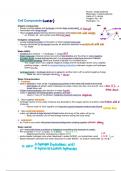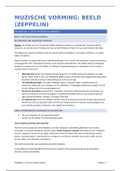Summary
Summary Biology (12th grade): Biochemistry unit
- Course
- Biology
- Institution
- 12th Grade
This set of notes condenses the key ideas for the biochemistry unit for 12th grade biology! Covering topics like Cell Compounds, Biological Molecules (carbohydrates), Proteins, Lipids, Recombinate DNA, Replication of DNA, Homeostasis, and so much more, it will definitely be beneficial studying for ...
[Show more]




